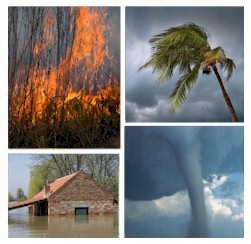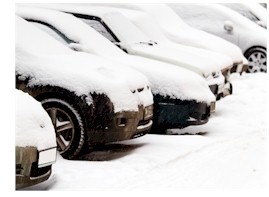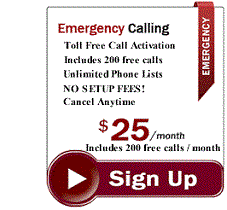|
|


Emergency Alert Systems
 This section of our technical library presents articles written about Emergency Alert Systems and Disaster Recovery definitions, terms and related information.
This section of our technical library presents articles written about Emergency Alert Systems and Disaster Recovery definitions, terms and related information.
The 911Broadcast emergency notification and alert service can deliver a large number of phone calls using a network of phone systems employing digital phone lines simultaneously. Should a disaster such as a snow storm, wild fire or flood hit your area, 911Broadcast systems can alert your community quickly providing specific instructions if an evacuation is required.
This service is available using our emergency broadcasting systems. If a dangerous chemical spill occurs in your community, you can target specific areas to call. If a severe snow storm hits your area, your community can be notified of school closings or event cancellations.
Register Online For Emergency Alert Services
DSC now provides an online signup for both non-profit and business organizations wishing to use our emergency voice broadcasting outsourcing services. Signup is easy and free! Our competitive rates are affordable, even for the smallest calling campaign.
Use this form to obtain a quotation and pricing information with no obligation until you are ready to start calling and provide us with your payment information.
Both emergency and non-emergency voice broadcasting services can be provided by DSC.
To register online, click on the the online registration image or button on the right.
Predicting Blizzard Technology
Accurately predicting blizzards and severe snow storms is still more of an art than a science.
In the article "Predicting Blizzards: Model Misbehavior" from www.almanac.com, the author states:
"THINK "BLIZZARD" and heavy snowfall comes to mind. Officially, however, the deadly winter storm is defined by these factors:
- wind gusts over 35 mph;
- visibility of less than a quarter-mile (though if you've ever been caught in a blizzard, you'll probably swear it's closer to a few inches);
- duration of at least three hours.
- temperature below 20°F (-7°C)
Although blizzards are tracked by satellites, forecasters use computer models to predict their paths. The models reside in mammoth supercomputers and are constantly fed information about the current state of the atmosphere.
According to the National Weather Service, the computers have an overall accuracy level of 85 percent-a respectable rate, as some forecasters learned on February 5, 1978. On that day, weathermen ignored a computer's prediction of a massive East Coast snowstorm and put their faith in more tried-and-true methods, such as looking through reams of hand-drawn charts. The computers won; areas of the Northeast wound up buried under more than two feet of snow.
Nonetheless, while computers can often "see" blizzards coming, they're far from foolproof. A case in point: On January 24, 2000, models persuaded forecasters in Washington, D.C., to predict "less than an inch of snow" for the following morning. The models misfired by about 250 miles (400 kilometers), and a major blizzard dumped over a foot of snow on the area.
That forecasting foul-up was blamed in part on bad timing. At midnight and noon Greenwich mean time, weather balloons are routinely sent up all around the world. "New information from the balloons came out just after the evening weather shows were over," says Bob Gall, a scientist with the U.S. Weather Research Program, based in Silver Springs, Maryland.
Another problem: Models are only as good as the data they're given-and that's never an accurate reflection of real conditions. "You can make some really tiny changes, such as adding a hundredth of a degree to the temperature, run the model again, and you'll get a different answer," says Gall. In the case of the D.C. blizzard, the model didn't adequately gauge the effect of an eruption of thunderstorms over Georgia. "The thunderstorms played a major role in keeping the storm further west," says Gall. "A track farther east would have put the snow farther east, perhaps mostly in the ocean. The westerly track put it over D.C. The model didn't handle that very well."
The computer model's degree of accuracy also depends on the blizzard itself. "Some systems are more predictable than others," says Gall. "Forecasts for a big high pressure system moving down across the United States are usually pretty good for up to 72 hours. But if you have a frontal system [the narrow zone separating cold and warm air masses] there is less predictability. Small miscalculations in location can mean big differences in what you're going to shovel the next day.
FOR THE RECORD
Forecast: Fair, slightly colder
Fact: "Colder brisk westerly winds and fair weather" was the official forecast issued by the War Department Signal Service (a precursor to today's National Weather Service) on March 11, 1888. The next day, the Blizzard of 1888 dumped four feet of snow from New York City, north through New England, killing 400.
The Vermont Bellows Falls Times described conditions this way: "No paths, no streets, no sidewalks, no light, no roads, no guests, no calls, no teams, no hacks, no trains, no moon, no meat, no milk, no paper, no mails, no news, no thing-but snow."
Blizzards - Emergency Dialers For Snow Storm Warnings
 If a blizzard or severe snow storm is threatening your community, our emergency phone service can help you notify your emergency response staff and neighbors.
With our emergency phone service, you can broadcast warning messages to thousands of households in your community warning of catastrophic disasters including blizzards and severe winter storms.
If a blizzard or severe snow storm is threatening your community, our emergency phone service can help you notify your emergency response staff and neighbors.
With our emergency phone service, you can broadcast warning messages to thousands of households in your community warning of catastrophic disasters including blizzards and severe winter storms.
Messages can be simultaneously delivered in just minutes using our network of phone systems and services. Pre-recorded warning messages can be played giving households information regarding the blizzard location and whether a community should take special actions. You can send a broadcast warning to specific neighborhoods or communities in the event of a blizzard and provide priority delivery of these messages to those in remote areas where utility or public services may be suspended.
Multiple messages can be delivered to different members of the community based upon proximity to the storm and areas most effected by the blizzard. Calls can be directed to operators that are standing by to handle special individual emergencies.
Messages can also be broadcast to emergency responders such as EMS crews or other volunteers or special assistance from emergency personnel.
|




 This section of our technical library presents articles written about Emergency Alert Systems and Disaster Recovery definitions, terms and related information.
This section of our technical library presents articles written about Emergency Alert Systems and Disaster Recovery definitions, terms and related information.

 If a blizzard or severe snow storm is threatening your community, our emergency phone service can help you notify your emergency response staff and neighbors.
With our emergency phone service, you can broadcast warning messages to thousands of households in your community warning of catastrophic disasters including blizzards and severe winter storms.
If a blizzard or severe snow storm is threatening your community, our emergency phone service can help you notify your emergency response staff and neighbors.
With our emergency phone service, you can broadcast warning messages to thousands of households in your community warning of catastrophic disasters including blizzards and severe winter storms.